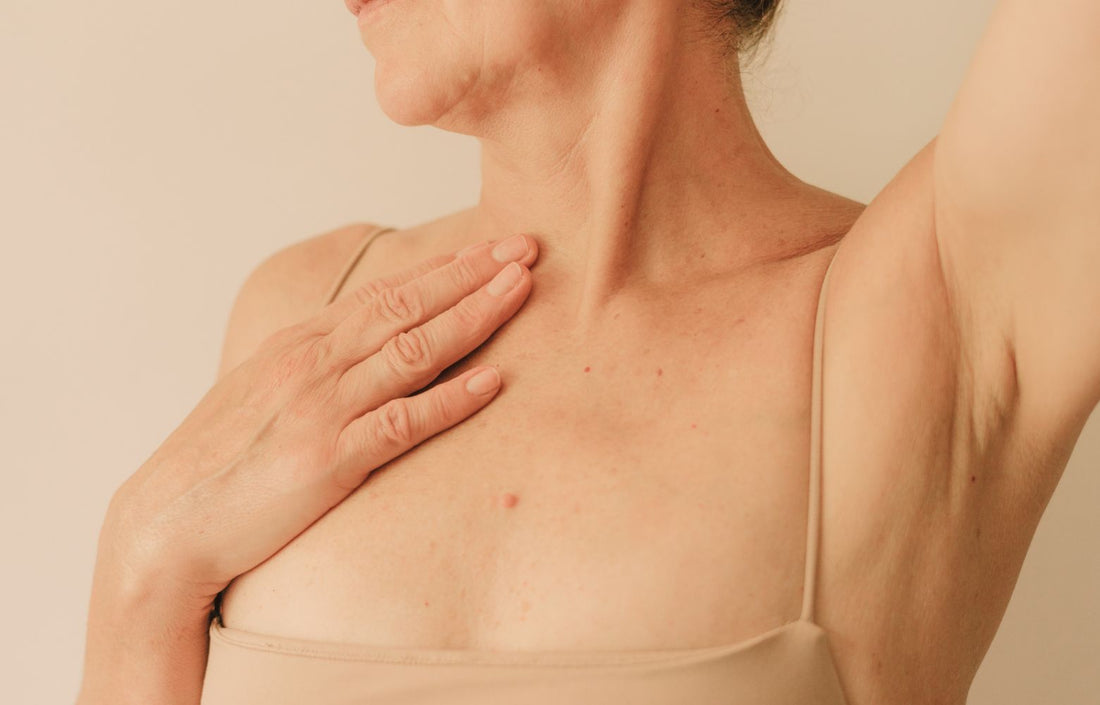
What are the symptoms of perimenopause and menopause?
Share
Perimenopause, which means ‘around menopause’ and menopause are both transitional phases in a woman’s reproductive cycle. Perimenopause is the stage before menopause when many women start to experience menopause like symptoms.
Although similar, perimenopause and menopause have some different symptoms. During perimenopause there is a drop in the levels of estrogen and progesterone the body produces. Estrogen is the hormone produced by the ovaries which is why periods start to become irregular with differing flow. Perimenopause can last from a few months to several years and usually starts in the mid-late 40s although some women experience early perimenopause before the age of 45.
Menopause, when the ovaries produce no eggs and your periods stop, is categorised as when you haven’t had a period for 12 months. The average age for menopause is 51. For many women menopause symptoms will continue after this time into the postmenopause phase.
Symptoms
Some of the symptoms of perimenopause and menopause are well known, like hot flushes. Other symptoms can fluctuate and if they’re mild, it’s common for women not to realise they’re in perimenopause. Women differ both in the symptoms they experience, when they experience them and for how long. One symptom might disappear, only to come back again down the line. It’s important to realise that every woman’s experience is different.
20% of women will have no menopause symptoms
60% of women have mild to moderate symptoms
20% of women have severe symptoms that impact their daily life
For many years, it’s thought there were 34 symptoms of menopause but it’s now believed there are more than 60 and potentially up to 100. Perimenopause and menopause affect the brain and body in many ways which is why it’s hard to pinpoint what’s a symptom or whether it’s something else that’s happening at the same time.
There are three main symptomatic areas related to menopause:
-
Vasomotor symptoms. These relate to the constriction or dilation of blood vessels and include hot flushes, night sweats, blood pressure changes and heart palpitations.
-
Dryness symptoms. Estrogen is essential for skin hydration and also helps maintain vaginal lubrication so reduced levels of estrogen can lead to a dry vaginal feeling, irritation and painful sex.
- Insomnia symptoms. Fluctuating estrogen may affect our sleep-wake cycles leading to poor sleep and this, combined with the vasomotor symptoms (night sweats) and psychological symptoms (anxiety), can lead to insomnia and bad sleep.
Perimenopause symptoms
- Irregular periods
- Periods that are heavier or lighter than normal
- Having worse PMS before your period
- Breast tenderness
- Weight gain
- Changes to hair such as hair loss and thinning
- Brittle nails
- Heart palpitations
- Reduced sex drive
- Difficulty concentrating or ‘brain fog’
- Forgetfulness
- Muscle and joint aches and pain
- Urinary tract infections (UTIs)
- Headaches
- Food sensitivity and digestive issues
- Bloating
- Changes to taste
- Food cravings
- Incontinence
Menopause symptoms
- Hot flushes
- Night sweats
- Depression
- Anxiety and irritability
- Mood swings
- Panic attacks
- Insomnia
- Extreme tiredness and fatigue
- Dry skin and itchiness
- Vaginal dryness
- Increased need to urinate
- Dizziness
- Pins and needles
- Burning mouth
- Electric shock sensations
- Osteoporosis
Some of the menopause symptoms can occur in perimenopause and it’s very likely there will be an overlap of symptoms. Every woman is different and there’s no definitive list of what happens, when and for how long which can make it hard to diagnose what stage you’re in. Some symptoms can be severe and extremely debilitating so it’s important that you seek medical help if they’re impacting your daily life.
Women in perimenopause and menopause can have higher cholesterol which means they’re at greater risk of heart disease. Cholesterol checks should be done regularly.
Treatment
Luckily, there are lots of treatment options available, from prescribed medications to more natural alternatives. If you find your regular doctor is unsympathetic, seek out a specialist menopause or women’s health doctor.
Things you can do at home include regular exercise, paying attention to your diet, reducing alcohol, limiting caffeine, stopping smoking and taking supplements that help your particular symptoms.
If you have trouble sleeping, try daily exercise (but not before bed), wear light cotton nightclothes and have cotton sheets, sleep in a cool environment, maintain a healthy diet and avoid spicy foods, drink plenty of water during the day and practice relaxation and breathing exercises.
Hypnotherapy has been found to help some women with hot flushes, anxiety and mood swings, and sleep issues.
Remember, there's no right or wrong; just whatever works for you.
This article has been reviewed by our expert advisory team.

